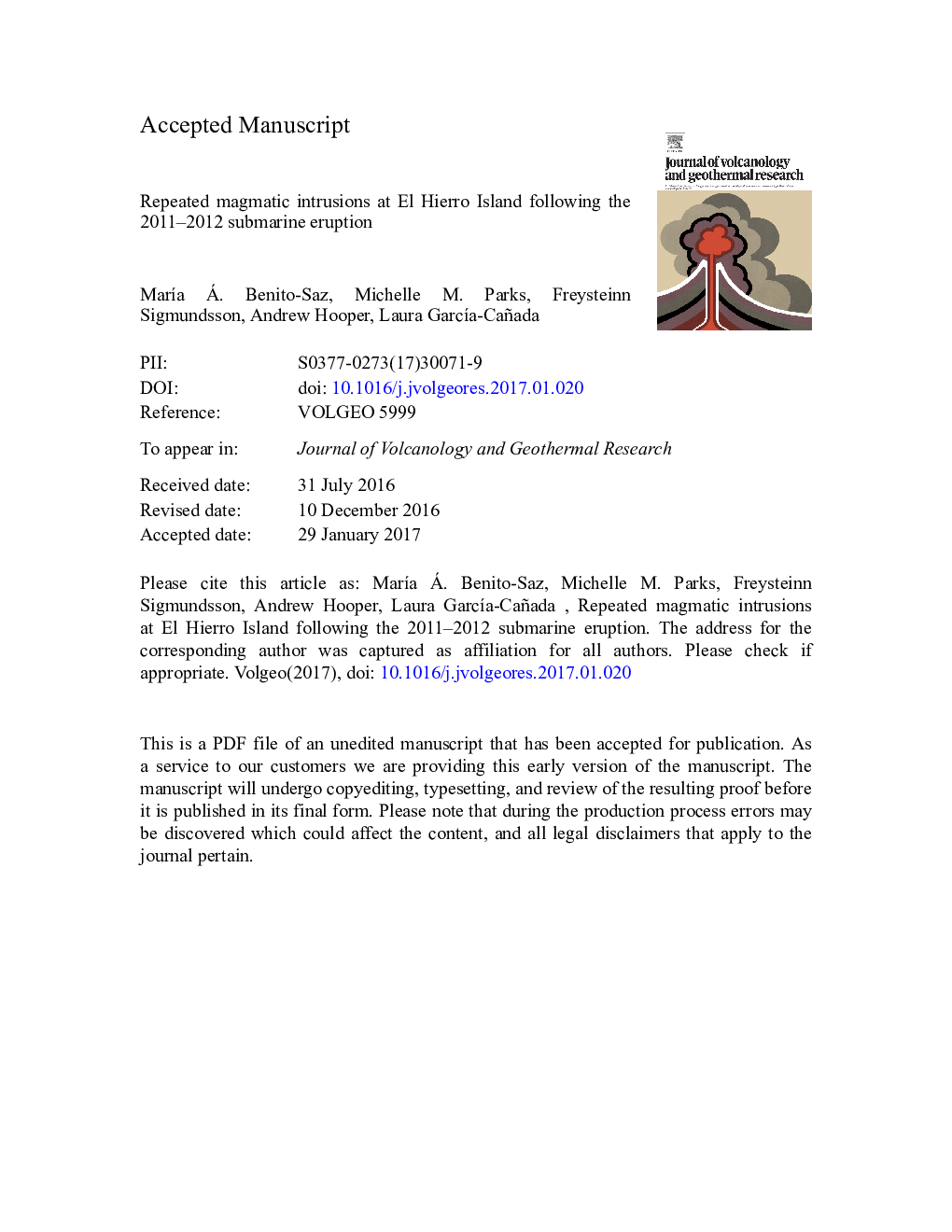| Article ID | Journal | Published Year | Pages | File Type |
|---|---|---|---|---|
| 5783720 | Journal of Volcanology and Geothermal Research | 2017 | 42 Pages |
Abstract
After more than 200Â years of quiescence, in July 2011 an intense seismic swarm was detected beneath the center of El Hierro Island (Canary Islands), culminating on 10 October 2011 in a submarine eruption, 2Â km off the southern coast. Although the eruption officially ended on 5 March 2012, magmatic activity continued in the area. From June 2012 to March 2014, six earthquake swarms, indicative of magmatic intrusions, were detected underneath the island. We have studied these post-eruption intrusive events using GPS and InSAR techniques to characterize the ground surface deformation produced by each of these intrusions, and to determine the optimal source parameters (geometry, location, depth, volume change). Source inversions provide insight into the depth of the intrusions (~Â 11-16Â km) and the volume change associated with each of them (between 0.02 and 0.13Â km3). During this period, >Â 20Â cm of uplift was detected in the central-western part of the island, corresponding to approximately 0.32-0.38Â km3 of magma intruded beneath the volcano. We suggest that these intrusions result from deep magma migrating from the mantle, trapped at the mantle/lower crust discontinuity in the form of sill-like bodies. This study, using joint inversion of GPS and InSAR data in a post-eruption period, provides important insight into the characteristics of the magmatic plumbing system of El Hierro, an oceanic intraplate volcanic island.
Related Topics
Physical Sciences and Engineering
Earth and Planetary Sciences
Geochemistry and Petrology
Authors
Maria A. Benito-Saz, Michelle M. Parks, Freysteinn Sigmundsson, Andrew Hooper, Laura GarcÃa-Cañada,
